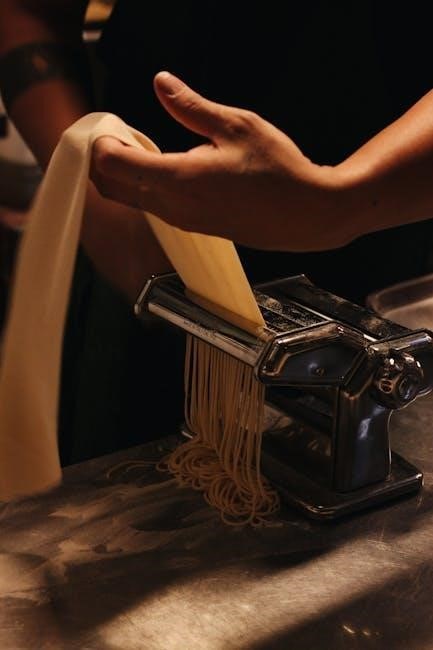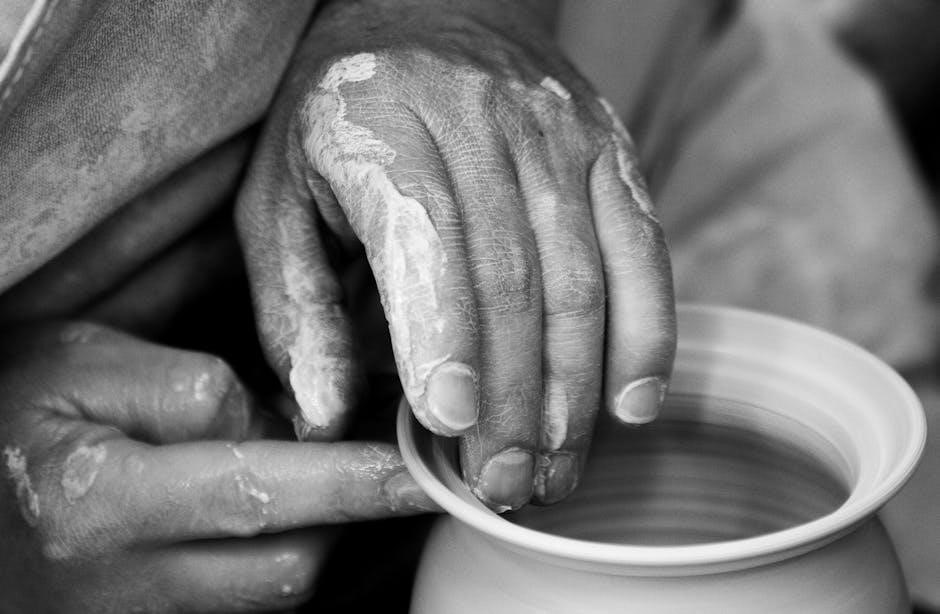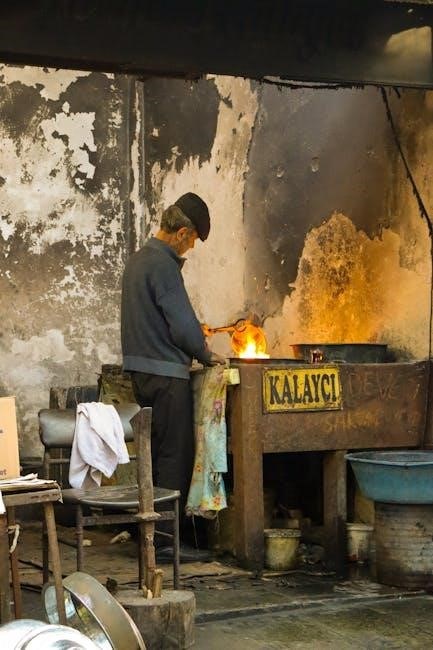What is Lomi Lomi Massage?
Lomi Lomi, or lomilomi, is a traditional Hawaiian massage that uses rhythmic, flowing strokes to relax the physical body and restore balance․ The word “Lomi” means “to rub,” accurately describing the massage’s core action and intention for overall wellbeing․

Origins and History of Lomi Lomi
Lomi Lomi, an ancient massage native to the Hawaiian Islands, boasts a rich history spanning over 1,000 years․ It was a sacred practice deeply intertwined with Hawaiian shamanism, not merely a relaxation technique, but a holistic method of healthcare․ Traditional healers, connected to spiritual practices like Hooponopono and Lāau lapaau, performed it․
Passed down through families and tribes, each lineage developed unique techniques, preferences, and focuses, influenced by their Ahupuaʻa (traditional region) and Hawaiian island․ These techniques, often instinctive and free-form, varied greatly․ Lomi Lomi was more than a massage; it was a compassionate bodywork rooted in temple-style techniques․
It addressed physical pain, and also psychological, emotional, and spiritual well-being, using elements of prayer, breathing, and sometimes dance․
Lomi Lomi Techniques
During a Lomi Lomi massage, therapists use fingers, palms, elbows, and forearms to stroke and rub the body gently․ They might incorporate massage tools, such as volcanic rocks or Lomi Lomi sticks and chants․
Use of Forearms and Elbows
Lomi Lomi massage distinguishes itself through the generous use of the therapist’s forearms and elbows․ Rather than relying solely on hands and fingers, practitioners employ these broader surfaces to deliver long, flowing strokes across the body․ This technique allows for deeper muscle penetration and a more encompassing sense of connection․
The forearms and elbows enable therapists to apply consistent pressure over larger areas, facilitating the release of tension and promoting circulation․ This approach is particularly effective in addressing muscle stiffness and chronic pain․ Skilled therapists navigate the body’s contours with fluidity and precision, using their forearms and elbows to create a rhythmic, wave-like motion that soothes and revitalizes․ The use of these body parts allows for a more integrated and holistic massage experience, embodying the spirit of Aloha․
Long, Flowing Strokes
A hallmark of Lomi Lomi massage is the use of long, flowing strokes that traverse the entire length of the body․ These strokes are not just a physical technique; they embody the essence of Hawaiian healing, promoting harmony and balance․ The therapist’s hands glide smoothly over the skin, mimicking the ebb and flow of ocean waves, fostering a sense of connection and release․
These continuous movements encourage the circulation of blood and lymph, aiding in the removal of toxins and promoting cellular nourishment․ The long strokes also help to unravel muscle tension and adhesions, allowing for greater flexibility and range of motion․ More than just a massage technique, it’s a dance of healing, inviting the recipient to surrender to the present moment and embrace a state of deep relaxation․ The strokes are applied with varying pressure, tailored to meet individual needs․
Incorporation of Other Tools
While hands and forearms are central to Lomi Lomi, practitioners may also incorporate other tools to enhance the massage experience and deepen its therapeutic effects․ Volcanic rocks, heated to a comfortable temperature, can be used to further relax muscles and promote circulation․ The warmth from the stones penetrates deeply, soothing aches and pains while inducing a sense of grounding and connection to the earth․
A Lomi Lomi stick, traditionally made from wood, may also be used to apply pressure to specific points or to assist with stretching and mobilization․ Additionally, traditional chants or humming sequences can be integrated into the session, creating a vibrational environment that supports healing and transformation․ These auditory elements work to calm the mind, open the heart, and facilitate a deeper connection to one’s inner self․ The combination of these tools creates a multi-sensory experience․

The Meaning of “Lomi”
The word “Lomi” itself holds significant meaning within the context of this ancient Hawaiian healing practice․ Simply translated, “Lomi” means “to rub,” “to knead,” or “to massage․” However, the depth of its meaning extends far beyond a mere physical manipulation of the body․ In Hawaiian culture, repetition of a word intensifies its meaning, so “Lomi Lomi” implies a massage that is more potent and transformative․
It suggests a continuous, flowing movement that works on multiple levels – physical, emotional, and spiritual․ This repetition also emphasizes the importance of rhythm and flow in the massage, mimicking the natural rhythms of the ocean waves, the wind, and the breath․ “Lomi Lomi” is not just about rubbing muscles; it is about nurturing, restoring, and facilitating healing through loving touch and a deep understanding of the body’s interconnectedness․
Spiritual and Healing Aspects
Beyond physical relaxation, Lomi Lomi embodies spiritual healing․ Traditionally performed by healers, it connects to practices like Hooponopono and Lāau lapaau․ It addresses blockages, fostering harmony between mind, body, and spirit, promoting holistic well-being․
Connection to Hooponopono and Lāau lapaau
Lomi Lomi’s spiritual dimension is deeply intertwined with traditional Hawaiian healing practices․ Notably, it shares connections with Hooponopono, an ancient practice of reconciliation and forgiveness․ Hooponopono aims to restore harmony by clearing negative energies and resolving conflicts within oneself and relationships․ This aligns with Lomi Lomi’s intention to release blockages and promote emotional well-being․
Furthermore, Lomi Lomi is linked to Lāau lapaau, the traditional Hawaiian herbal medicine․ Lāau lapaau utilizes the healing properties of native plants to address physical and spiritual imbalances․ The integration of herbs and natural remedies complements the massage techniques, enhancing the overall therapeutic effect․ Practitioners may incorporate herbal oils or poultices to support the healing process, deepening the connection between nature, body, and spirit․ These connections highlight Lomi Lomi’s holistic approach, addressing not only physical ailments but also emotional and spiritual well-being․

Benefits of Lomi Lomi Massage
Lomi Lomi massage offers numerous benefits, including stress relief and lymphatic drainage․ It promotes relaxation, cleanses toxins, and addresses physical and emotional well-being through holistic techniques rooted in Hawaiian healing traditions․
Relaxation and Stress Relief
Lomi Lomi massage is well-known as a soothing and relaxing way to relieve stress and tension․ The long, flowing strokes, reminiscent of ocean waves, help to calm the nervous system and promote a deep sense of relaxation; This type of massage isn’t just a relaxation technique; it can be a transformative experience․ The rhythmic movements and gentle manipulation of muscles aid in releasing pent-up emotions and physical stress․ Lomi Lomi fosters a connection between the body, mind, and spirit, creating a state of harmony and well-being․ By easing tension and promoting relaxation, Lomi Lomi improves overall health․
Lymphatic Drainage and Detoxification
Lomi Lomi massage promotes lymphatic drainage, which helps to cleanse toxins from the body․ The long, flowing strokes of Lomi Lomi stimulate the lymphatic system, encouraging the removal of waste and toxins․ Improved lymphatic drainage is associated with numerous health benefits, including a stronger immune system and reduced inflammation․ The massage helps to move stagnant fluids, facilitating detoxification․ This process can lead to increased energy levels, improved skin health, and a general feeling of well-being․ Lomi Lomi aids the body’s natural detoxification processes by promoting lymphatic circulation․ The massage helps release blockages within the body, supporting optimal function․
What to Expect During a Session
During a Lomi Lomi session, expect long, flowing strokes covering your body․ The therapist uses fingers, palms, elbows, and forearms․ The massage aims to release blockages․ Sessions often last an hour or more․ Therapists may incorporate massage tools like volcanic rocks․ Traditional chants or humming sequences are also possible․ Lomi Lomi is free-form, varying by lineage and island․ Therapists adapt techniques to the client’s needs․ The environment is usually relaxing and comfortable․ Modesty is respected, but draping may be minimal․ Communicate your preferences and comfort levels openly․ The experience is holistic, addressing mind, body, and spirit․ Be prepared for a compassionate and flowing bodywork session that promotes relaxation and well-being․ After the massage, hydrate and rest․
Variations and Lineages
Lomi Lomi isn’t a single massage style, but rather has unique lineages․ Each lineage has its own techniques, preferences, and focuses․ Techniques vary depending on the family, tribe, or Hawaiian island․ Some lineages emphasize spiritual healing․ Others focus on physical alignment․ Some incorporate specific chants or prayers․ Temple style lomi techniques are also very common․ Kahuna massage is another name sometimes used․ Practitioners use palms, forearms, fingers, and knuckles․ Some variations integrate hot stones or herbal remedies․ Understanding the lineage helps manage expectations․ Exploring different lineages reveals the massage’s breadth․ Each variation offers a unique healing experience․ Some lineages are more structured․ Others are more intuitive and free-flowing․ Discovering the right variation depends on individual needs and preferences․ Researching the therapist’s training is essential to finding a good fit․ The diverse lineages reflect Hawaii’s rich cultural heritage․

Lomi Lomi Training and Certification
Lomi Lomi training involves learning the massage techniques and understanding the cultural context․ Certification programs offer in-depth knowledge of Hawaiian healing practices․ Training often includes hands-on practice․ Students learn to use their forearms, elbows, and hands effectively․ They also study the spiritual aspects of Lomi Lomi․ Courses cover anatomy and physiology․ Students learn about energy flow and how to address imbalances․ Training emphasizes the importance of intention and connection with the client․ Some programs incorporate traditional Hawaiian chants and rituals․ Certification validates a practitioner’s skills and knowledge․ It demonstrates a commitment to ethical practice․ Choosing a reputable training program is crucial․ Look for instructors with extensive experience․ Consider the program’s curriculum and teaching methods․ Ensure the program aligns with your personal and professional goals․ Completing a certification program enhances credibility․ It also provides a solid foundation for a successful career․ Continued education is important for staying current with best practices․